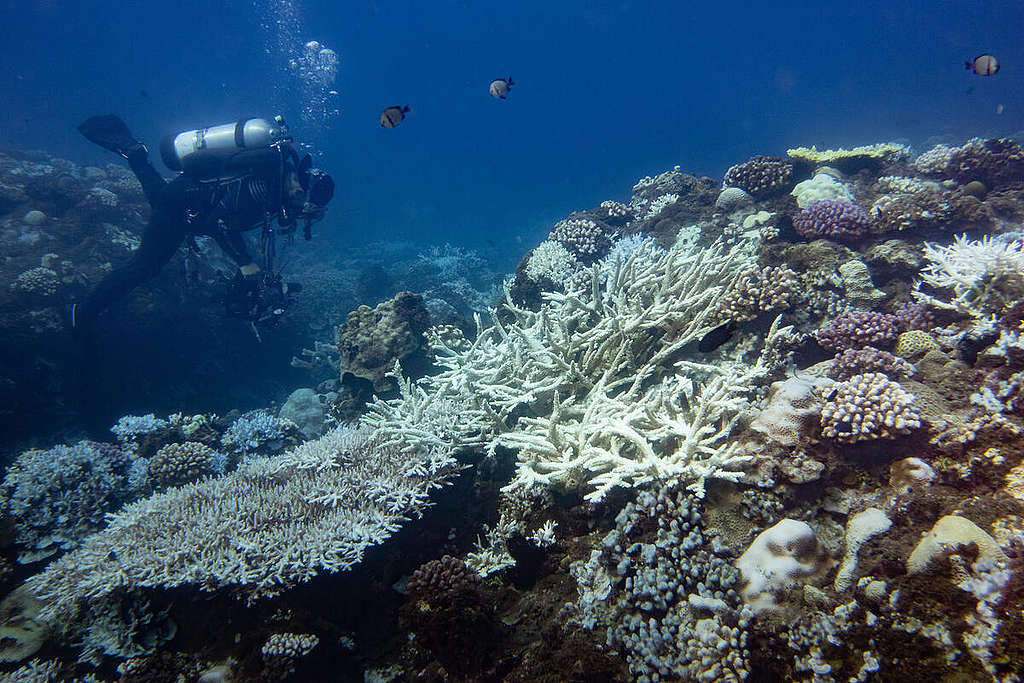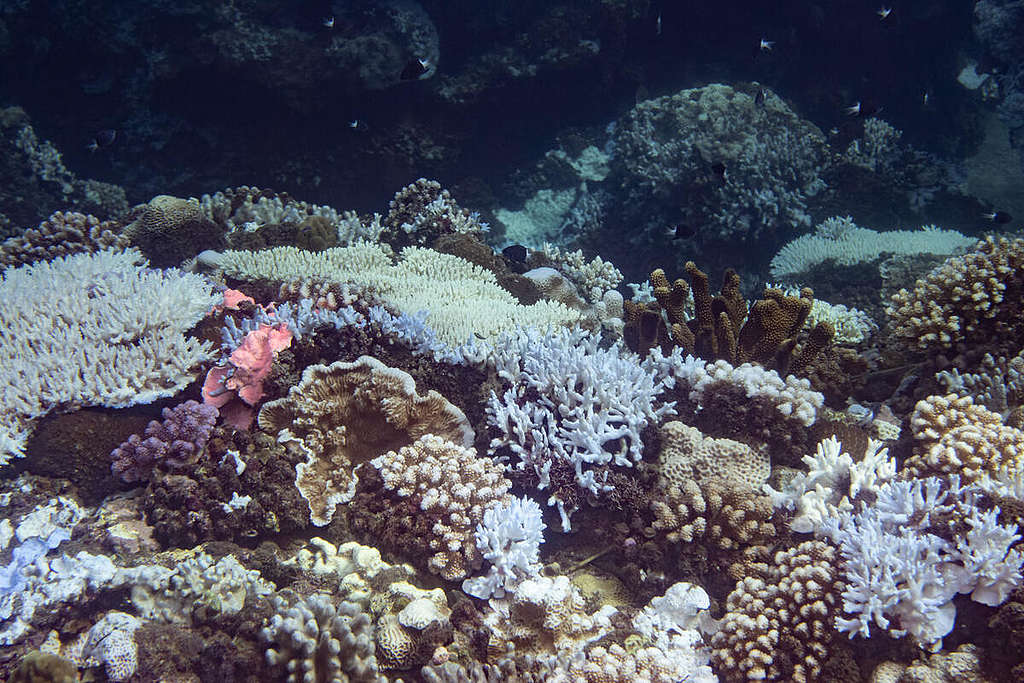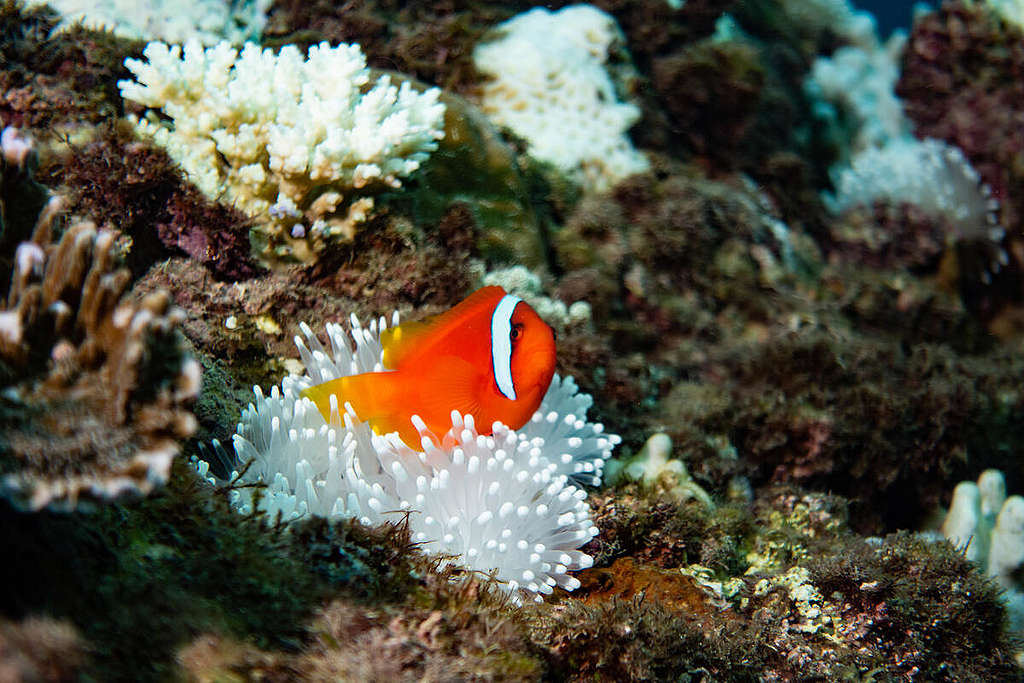by Lena Chang
Taiwan is home to a diversified coral ecology that is rarely seen in other subtropical areas around the world. However, as the climate is getting hotter and breaking historical records, Taiwan is seeing widespread coral bleaching in its oceans. The Coral Reef Observation System of the National Oceanic and Atmospheric Administration (NOAA) has lately raised the coral bleaching alert
in the waters of southern Taiwan to Alert Level 2, which means a large scale of coral mortality is underway that affects the precious marine ecology.
What are the causes of coral bleaching in Taiwan? What are the impacts? And how can we prevent coral bleaching?

What is a coral?
A lot of people may have the wrong impression that a coral is a kind of “plant” growing in the sea. In fact, corals are actually animals with colonies of many identical individual polyps, which are tiny, soft-bodied organisms. Most of them are transparent. The riot of colours that we see come from the algae called zooxanthellae that provide photosynthetic nutrients and form close biological interaction called symbiosis with the corals.
Taiwan used to be known as the coral kingdom. The coral reef communities are widespread in Kenting, Green Island, and Orchid Island. These communities make up less than one-thousandth of the world’s coral reefs in terms of scale, but in terms of the variety of species, they make up one-third of the world’s total. Of the 700 species of stony corals on the planet, 250 species can be found along the coast of Taiwan!
Why are corals so important?
Coral reef is an indispensable part of the entire marine ecosystem. Coral reefs harbour many marine creatures. All manners of creatures inhabit, breed, feed, and avoid enemies in coral reefs, which naturally forms a rich ecosystem. There can be as many as 1,500 types of fish within coral reefs. That’s why it is dubbed the “tropical rainforest in the sea”.
What is coral bleaching?
Corals are the longest-living animals. s long as the environmental conditions are good enough, they can grow for hundreds of years. Therefore, the death of coral colonies is usually due to the depressing living environment or the destruction of other creatures.
Corals are extremely sensitive to their surroundings. Changes in environmental conditions, such as water temperatures, pH values, and turbidity will directly affect the symbiotic relationship between corals and zooxanthellae. When the living environment is not optimal, the symbiotic zooxanthellae will gradually leave the corals or will be expelled by the corals, leading to the corals losing their colour sources and gradual bleaching.

After the symbiotic algae leaves, the corals will not die immediately. If the environment becomes better, the bleached corals can regain the zooxanthellae and slowly recover for survival. However, if they bleach for a long time, the corals will gradually weaken and die. Therefore, coral bleaching is the last distress signal for corals.
Global warming is bad for coral reef growth
With the drastic changes of climate in recent years, global warming has caused seawater temperatures to rise. The greenhouse effect has also caused ocean acidification that weakened coral’s absorption of calcium carbonate, which is made of coral’s skeleton. When coral reefs are not strong enough to resist natural erosion it will take longer for them to recover from bleaching.
NOAA’s coral reef observing system uses satellites to monitor the sea surface temperature and marks areas with high water temperatures to alert the risk of coral bleaching. Due to the Pacific high this year
, Taiwan has encountered fewer typhoons that lead to higher temperatures of the land and sea. The waters around Taiwan, including Pratas Islands and Taiping Island, have recorded sea temperatures of 30°C.
The optimal water temperature range for coral growth is 20-28°C. If the water temperature is lower than 18°C or higher than 30°C, most corals will expel the symbiotic algae in their body, causing bleaching or even death. If the number of typhoons in Taiwan this year stays low, the fate of corals appears pessimistic as the sea temperature remains high. It is worth noting that short-term changes in sea temperature will not cause bleaching. The main cause of large-scale coral bleaching is often the continuous abnormal warming of the seawater.

Human activities are a culprit
In addition, terrestrial and marine pollutants to human activities can easily cause harmful impacts on coral reefs. Agricultural pesticides flowing into rivers, industrial and household wastewater discharged into the sea, and even sun protection products that contain harmful chemicals like benzophenone and octyl methoxycinnamate leaking into the ocean may disrupt coral reefs’ reproduction and growth cycles.
Marine ecosystems are hit hard
The destruction and death of coral reefs have dealt a major blow to the marine ecosystem. The growth rate of corals is very slow; even under normal conditions, they only grow about one centimetre a year. Therefore, the coral reefs we see in the sea are often the results of decades or even centuries. Once they’re damaged, they’ll need the same amount of time to resume their original size.
In addition to conserving diverse marine life, a healthy coral reef ecosystem also supports various human needs. It not only protects the adjacent coastline from ocean erosion but also has high economic values. It can generate billions of dollars in tourism revenue. Therefore, the decline of the ecosystem caused by coral bleaching will inevitably affect the livelihoods of industries that depend on coral reefs, such as tourism and fishery.
How to solve the problem of coral bleaching?
In the face of the unusual increase in seawater temperature caused by climate change, more ambitious carbon reduction targets should be set by the Taiwanese government to replace fossil fuels with sustainable energy and slow down global warming.

Beautiful corals provide habitat for diversified marine creatures. However, various human activities, excessive coastal development, and the unusual increase of seawater temperatures due to climate change have put great pressure on the corals. As we continue to better understand the importance of coral reefs, we must also avidly continue our preservation work hand-in-hand.
Lena Chang is a Climate and Energy Campaigner at Greenpeace East Asia.

No comments:
Post a Comment
Note: Only a member of this blog may post a comment.